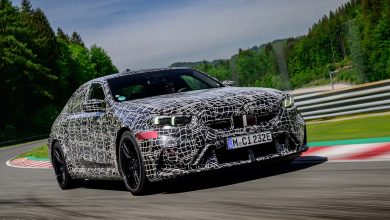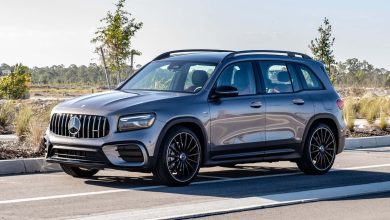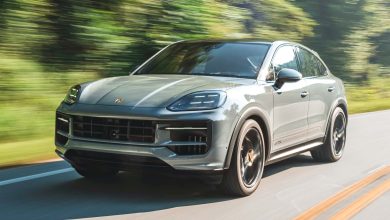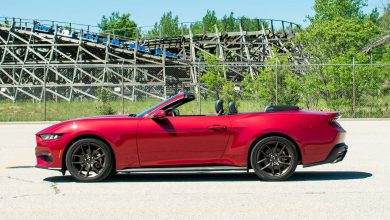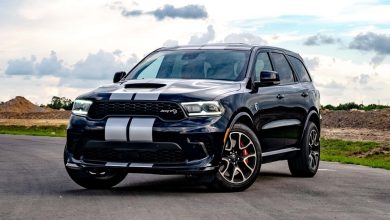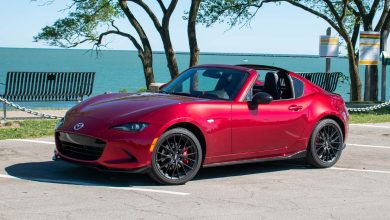The Jeep Gladiator Mojave Isn’t the Desert Runner You Want

The Chevrolet Colorado and GMC Canyon are both brand new. The Toyota Tacoma and Ford Ranger are new, too. Even the Nissan Frontier—now three years old on its current chassis—still feels fresh. What I’m saying is: The mid-size truck segment is more competitive than it’s been in ages.
The Jeep Gladiator, meanwhile, is celebrating its fourth birthday this year. That’s not exactly ancient in truck years, but it already feels a step behind the brand-new alternatives. That’s especially true of the Mojave model—Jeep’s supposed doesert runner—which has some seriously stiff competition this year.
| Quick Specs | 2024 Jeep Gladiator Mojave |
| Engine | 3.6-Liter V-6 |
| Output | 285 Horsepower / 260 Pound-Feet |
| 0-60 MPH | 8.3 Seconds (est.) |
| Weight | 4,982 Pounds |
| Price / As Tested | $54,890 / $66,690 |
This truck did get a few updates for 2024, though. The seven-slot grille is slightly sleeker, the headlights are a touch cleaner-looking, and Jeep smartly removed the old-school antenna for a windshield-embedded unit instead. The truck looks better in general, but mostly the same; You only spot the subtle updates when this Gladiator parks next to the previous one.
At some point, the Gladiator will get Jeep’s plug-in-hybrid 4Xe powertrain. For now, the Gladiator makes do with the same dated 3.6-liter Pentastar V-6 it debuted with. The diesel is dead on all Gladiator models—not that it was ever available on the Mojave anyway. Here that old Pentastar V-6 makes 285 horsepower and 260 pound-feet of torque and is paired to an optional eight-speed automatic. A six-speed manual comes standard.
That’s not nearly enough power to keep up with the big boys. The Chevrolet Colorado ZR2 has 310 hp and the new Tacoma TRD Pro has 326 hp. The top-dog Ford Ranger Raptor packs a whopping 410 hp. But it’s not all bad.
Pros: Better Styling For 2024, Hugely Capable, Comfortable Ride
The V-6 is kinda punchy off the line. It has just enough thrust to launch the Gladiator from a stoplight with decent enthusiasm. Torque doesn’t peak until 4,400 rpm and it still takes more than 8 seconds for the Gladiator Mojave to reach 60 miles per hour, but most buyers will be happy with the amount of torque.
Only on the highway does the V-6 start to feel wheezy. The Mojave model weighs 4,982 pounds and the lack of forced induction means the naturally aspirated V-6 struggles to keep up with the truck’s heft at higher speeds. You really have to bury your foot to pass.
The Mojave model has a uniquely tuned suspension that makes it the only “Desert Rated” Gladiator on sale. That means—like some of the other desert-running trucks—this one is made for traveling fast over sand and rock. In theory.


It starts with thicker 2.5-inch Fox remote reservoir internal bypass shocks. These shocks are tuned to handle high-speed off-roading and come with a hydraulic bump stock up front for better rebound control over the exceptionally tough stuff. The front end also sits 1.0-inch taller than the rear and the springs are tuned softer out back. The entire setup rides on 33-inch Falken Wildpeak all-terrain tires.
Here’s the good: The Mojave absolutely glides over dirt roads. Even at speed, this truck floats smoothly over sticks and stones with barely a hit to the ride quality. And with a shorter 2.72:1 low-range ratio than the Rubicon, the Mojave actually has a higher top-speed in low range. It can hit 50 miles per hour… in theory.
That’s the bad news: The solid front axle still feels 10 years behind the competition. Most modern desert runners, like the Colorado ZR2 and Ranger Raptor, have independent front axles with fancy coilovers and are far more composed at speed. The Gladiator Mojave is still too sketchy for high-speed stuff, especially with the vague steering feel; there’s a ton of wiggle on center. And unlike the Gladiator Rubicon model, the Mojave doesn’t have a disconnecting stabilizer bar. Not that this Gladiator was designed for rock-crawling anyway.

Cons: Outdated Suspension Tech, Vague Steering, Pricey With Options
The desert-tuned suspension and ultra-long wheelbase (compared to other mid-sizers, at least) make this the most comfortable Gladiator on the road. With less suspension travel and limited articulation, the Mojave model doesn’t feel like it might tip over if you take a corner too quickly. And it won’t bash your butt on big bumps.
But that’s not to say this is the most comfortable mid-size truck out there—not by a long shot. And the cabin is covered in hard, rubber surfaces and plastics—great for getting dirty but not for comfort. At least you can take the roof off, it just requires two people and a set of tools to do so.
A new 12.3-inch touchscreen graces the center of the dash and it looks sharp with the latest Uconnect 5 infotainment software. The infotainment system is clean and easy to use and now has wireless Apple CarPlay and Android Auto connectivity.

The Gladiator Mojave is surprisingly pricey. It starts at $54,890 with destination before you tack on the mandatory Technology ($2,295) and Convenience ($1,045) packages. The former gives you that 12.3-inch touchscreen and the latter adds a wi-fi hotspot and heated seats. The eight-speed automatic is another $2,500, and the trail rail and tonneau cover package (great if you’re taking it on the trail) cost an extra $2,095.
All told, this truck costs $66,690 as tested. Ouch. Considering a hardcore Chevrolet Colorado ZR2 Bison costs just over $60,000 and the new Ford Ranger Raptor is less than that, it’s hard to justify the Jeep at this price.
Read the full article here


